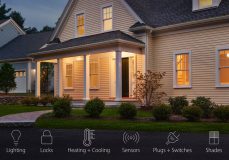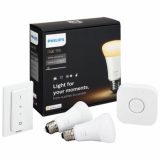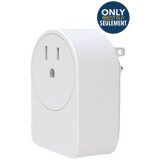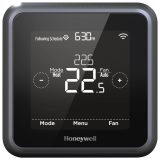
I think it is kind of crazy that Smart Home technology hasn’t really hit the mainstream yet. I mean, the basic idea behind the whole Smart Home concept is that you can control all sorts of things, from lights and locks, to blinds, thermostats and everything in-between, right from your smartphone or internet-connected device. Essentially and at its simplest, Smart Home technology allows people to monitor and manipulate gadgets and devices in their houses from a remote (wife-connected) location. Considering everyone and their dog owns a smartphone or tablet, it should have been a pretty smooth transition from our old “dumb” homes that we have to control manually like suckers, and embracing the new Smart Home tech.
However, the majority of homeowners just haven’t warmed up to the idea of adding more convenience and versatility to their living space yet, despite the fact that there are literally thousands of Smart Home products out on the market today. In my previous installment of this ongoing Smart Home System Series, I talked about Apple’s HomeKit, which is a framework or the underlying technology that lets various smart home devices talk to one another, and work together. In that blog, I also said Apple’s HomeKit wasn’t the only show in town when it came to integrated home automation tech. So, for this third blog in the Smart Home System Series, I’m going to give you all the details on Z-Wave, a competing umbrella framework for Smart Homes that is compatible with a simply huge number of products and brands.

Ride the Z-Wave
You may be asking yourself, “Why do I need this HomeKit or Z-Wave stuff when all I want to do is control my lighting from someplace like my office, or when I’m on vacation? Can’t I just buy something like the Philips Hue lighting system, and just be done with it?” Well, sure you can just pick up some individual lighting or lock product that comes with a bridge, gateway or “hub” that allows you to control the device through some internet-enabled app on your smartphone. But, what if you want to use that lighting and the lock at the same time? Say, you want to schedule your lights on your front porch to turn on at the same time your front door unlocks? For both those Smart Home devices to be able to talk and work together, you need them to speak the same language. Without the Z-Wave technology, you would just have a smart light bulb and a smart front door lock. But, when you have those products, plus a smart Z-Wave thermostat, and Z-Wave compatible alarm system – all talking to one another and controllable from one app; well then you have a Smart Home.

How Do I Get Started with Z-Wave?
It isn’t all that expensive to get your Smart Home started, especially considering there are so many Z-wave compatible devices out there. All you really need is a hub, or gateway that connects your smart gadgets to your wifi network. After that, it all depends on the devices you want – locks, blinds, security, temperature control – and how much you want to spend. Many people start off small, with just a hub and a couple of Smart Home gadgets, and then they add more devices and appliances as they get more comfortable with the technology, and start wanting more convenience and versatility in their homes.
 What Products Work with Z-Wave?
What Products Work with Z-Wave?
Currently, Z-Wave is the dominant technology in home automation, and there are something like 1,500 products out there using the wireless technology. Z-Wave is also a highly “scalable” technology, meaning it can control anywhere from one device all the way up to 232 devices with just one network. It allows you to take Smart Home products from literally hundreds of different brands, and give you seamless interoperability. That means you can control your Smart Home devices with your Apple Watch (with the right iOS app), or Amazon Echo. And Z-Wave has even been working with the aforementioned Apple HomeKit (a relative newcomer to the home automation framework world) to build an integration between their two systems! That would mean almost any of your Smart Home devices would (in the future) be able to work with all your other Smart Home tech, regardless of product brand or underlying technology. Maybe Smart Homes are indeed destined for the mainstream!
Do you currently use any products with the Z-Wave certification? What Z-Wave products and devices do you think you would use to kick off your own Smart Home concept? Don’t be shy, let me know what yo think in the comments section below.




very good i would like to enter the contest tks
Comments are closed.